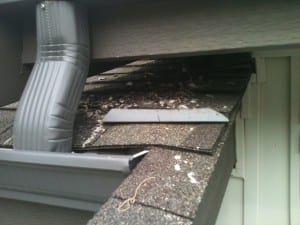
by Pigeon Patrol | Jun 12, 2014 | Bird Deterrent Products, Pigeon Patrol's Services, Pigeons in the News, UltraSonic Bird Control
 ALBUQUERQUE, N.M. —People living in a northwest Albuquerque apartment complex said they’re tired of being forced to live in filth and their pleas for help have gone unanswered.
ALBUQUERQUE, N.M. —People living in a northwest Albuquerque apartment complex said they’re tired of being forced to live in filth and their pleas for help have gone unanswered.
“There is a lot, a lot. They go through the dumpsters. Pigeons are everywhere,” said resident Hilario Herrera.
The residents have pleaded with management to clean up after the pigeons and keep them away.
“If you have problems with birds in a living space, deal with it immediately,” said Mark DiMenna, deputy director of the Environmental Health Department. “The birds are a problem, the droppings are a problem, but the bird mites are going to be a nightmare.”
Most find it disgusting, and many tenants say it’s causing health problems.
Some have been forced to go to the emergency room for breathing problems. Many have found themselves covered in bite marks, likely from bird mites.
“I have a 2 1/2-year-old daughter to support and she’s getting bit too. I didn’t know about it and now I know, so I’m going to have her stay at her grandma’s house,” said Herrera.
The department will go to St. Anthony’s Plaza Apartments Wednesday.
“The water is brown and oily. In fact, one of the maintenance men, the maintenance manager told me not to step in it, don’t touch it, don’t get near it, because it’s all very toxic, because the roof is covered in pigeon droppings,” said resident Judy Specht.
About Pigeon Patrol:
Pigeon Patrol Products & Services is the leading manufacturer and distributor of bird deterrent (control) products in Canada. Pigeon Patrol products have solved pest bird problems in industrial, commercial, and residential settings since 2000, by using safe and humane bird deterrents with only bird and animal friendly solutions. At Pigeon Patrol, we manufacture and offer a variety of bird deterrents, ranging from Ultra-flex Bird Spikes with UV protection, Bird Netting, 4-S Gel and the best Ultrasonic and audible sound devices on the market today.
Voted Best Canadian wholesaler for Bird Deterrent products four years in a row.
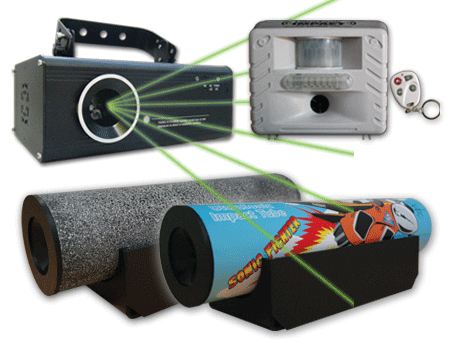
by Pigeon Patrol | Jun 4, 2014 | Bird Deterrent Products, Pigeon Patrol's Services, Pigeons in the News, UltraSonic Bird Control

Sonic bird control systems are becoming more common in the bird control sector and broadly speaking fall into three distinct categories; ultrasonic systems, sonic systems and bio-acoustic systems. For information on ultrasonic systems please see our ‘Ultrasonic Systems’ product review. Sonic systems produce a variety of electronically-generated sounds normally emitting noise levels up to 120 dB (A) and are designed to frighten birds with loud and unpleasant noises. Sonic noise is sound that is audible to the human ear – ultrasonic sound is normally not audible to the human ear but in some cases can be heard by women or young children. Bio-acoustic systems use natural alarm and distress calls as well as predator calls in order to create a hostile environment for the target species. Alarm calls are made when the bird perceives itself to be in danger, distress calls are made when the bird is in pain or has been attacked by a predator and predator calls are cries made by a predatory bird. Distress calls, alarm calls and predator calls are audible to the human ear.
Pure sonic systems are not widely available for the purpose of bird control with a majority of sonic devices being provided as part of a 2/3/4-way or even a 5-way system. These systems may include any of the following; distress calls, alarm calls, predator calls, ultrasonic sounds and sonic sounds. In some cases these systems are complimented by strobe lights providing a visual scaring element to the system. Most systems are available for internal or external use and a majority of the combo systems have multi-speaker options for ‘surround-sound’ scaring.
The most effective sonic systems appear to be those that are programmable and which offer sonic, ultrasonic and bio-acoustic options. For the purposes of this review it is these systems that we will concentrate upon. A majority of these systems are static systems with multi-speaker options that would normally be used for the protection of larger areas such as football stadiums or large industrial warehouses. For smaller more intimate areas the single-speaker units may be more appropriate but many of these units are only available with single-voice options such as distress calls or predator calls. Where sonic systems are installed in areas in areas of human habitation it must be understood that noise will be generated which may be intrusive, unpleasant and anti-social. For any type of urban application a thorough survey of the area must first be undertaken to assess the potential for human disturbance. If a sonic system is to be considered for an internal application such as a factory unit where people are working, care must be taken to ensure that workers do not suffer sonic disturbance (or visual disturbance if a combo unit with a strobe is used).
Most sonic systems are powered by mains electricity (AC current) for ease of use and in an effort to reduce the need for human interaction, but a majority of systems also offer a battery-powered option (DC current) and in some cases a solar panel option as well.
- Ultrasonic frequency range: 15-25 KHz
- Sonic frequency range: 3-5 KHz
- Ultrasonic sound pressure: 95-102 dB (per speaker) at 1 metre
- Sonic sound pressure: 105-110 dB (per speaker) at 1 metre
- Switchable sound options: Distress calls, Predator sounds, Sonic sounds
- Constant sounds: Ultrasonic sounds play constantly
- Ultrasonic modes: High frequency, Medium frequency, Low frequency
- Operation modes: Delay period (time between playing calls), Time of operation, Random mode
- Delay period settings: Short/Medium/Long/Extra Long
- Timed operations: Day only/24 hour/Night only
- Random settings: Mode on, Mode off
Another major consideration when siting a sonic device is proximity to human habitation. The benefit of a fully programmable device is that the various sounds and calls (and lights if applicable) can be switched off at times when the device may be liable to cause disturbance, but the more basic units may need to be manually switched requiring regular human interaction. In the case of all sonic systems the transmission of sound will be effected by wind, temperature and the deflection of sound waves from surrounding buildings and therefore finding the optimum site may be time consuming. It is also the case that when the speakers need to be re-located due to the risk of habituation, the process of risk assessment must be undertaken all over again to ensure that the reflected sounds not only continue to be effective as a deterrent but also do not disturb people living or working in the vicinity.
The sonic bird scarer is a relatively inexpensive product based on the sheer number of scaring options provided together in one unit, certainly in the case of the multi-function scarers, but the issue of habituation is an ongoing concern for users. Most experts believe that sonic products, be they bio-acoustic, ultrasonic, sonic or a combination of all three can only ever play a part in an overall control strategy combining other deterrents and anti-perching products. Although the product may appear to be reasonably priced based on the various options available to the user and relative to some of the more cost-prohibitive exclusion products such as bird netting, when provided as part of an overall control system the product does not seem quite so cost-effective. Many users will purchase this product because they are simply looking for a maintenance-free option that is clean, cheap to run and which has numerous operating options. It is possible, however, that the product will not quite live up to their expectations when the necessity to regularly re-site the product and/or the speakers to reduce habituation is taken into consideration, combined with the probable need to complement the system with deterrents.

Also commonly known as:
Bird wailer, sonic scarers, ultrasound bird scarers, quadblaster, wailer, silent bird scarer, electronic bird scarer, maxi wailer, midi wailer, broadband pro, billboard pro, ultrasonic scarers, sonic deterrents, ultrasound deterrents, bird xpeller pro, super bird xpeller pro, distress call system, sonic distress system
Relevance to pigeon control:
Sonic systems are used to scare a wide variety of birds, predominantly in the agricultural sector, but the product is also commonly marketed as a pigeon-scaring device
About Pigeon Patrol:
Pigeon Patrol Products & Services is the leading manufacturer and distributor of bird deterrent (control) products in Canada. Pigeon Patrol products have solved pest bird problems in industrial, commercial, and residential settings since 2000, by using safe and humane bird deterrents with only bird and animal friendly solutions. At Pigeon Patrol, we manufacture and offer a variety of bird deterrents, ranging from Ultra-flex Bird Spikes with UV protection, Bird Netting, 4-S Gel and the best Ultrasonic and audible sound devices on the market today.
Voted Best Canadian wholesaler for Bird Deterrent products four years in a row.
Contact Info: 1- 877– 4– NO-BIRD (www.pigeonpatrol.ca)
The information on this blog is for personal use only. Content for this blog obtained from other websites is not being used for any commercial reasons whatsoever as per the copyright statement on the Pigeon Control Resource Centre’s website. http://www.pigeoncontrolresourcecentre.org/ Special thanks for the people and companies that helped gather this information. This information is to be used for reference only.
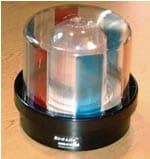
by Pigeon Patrol | Jun 4, 2014 | Animal Deterrent Products, Bird Deterrent Products, Pigeon Patrol's Services, Pigeons in the News
 Strobe lights are not commonly associated with bird control but manufacturers and suppliers often recommend the installation of strobe lights as a complementary control particularly for indoor areas where overnight roosting is the issue. Strobe lights are also available with a high-frequency sonic device in a single unit providing bothsonic and visual disturbance to roosting birds. According to manufacturers’ claims strobe lights can be an effective bird control product with a wide variety of birds including pigeons, swallows, starlings, crows, waterfowl and blackbirds making the product extremely versatile.
Strobe lights are not commonly associated with bird control but manufacturers and suppliers often recommend the installation of strobe lights as a complementary control particularly for indoor areas where overnight roosting is the issue. Strobe lights are also available with a high-frequency sonic device in a single unit providing bothsonic and visual disturbance to roosting birds. According to manufacturers’ claims strobe lights can be an effective bird control product with a wide variety of birds including pigeons, swallows, starlings, crows, waterfowl and blackbirds making the product extremely versatile.
The main application for the use of strobe lights would be warehouses, the undersides of bridges or roof voids where light is restricted or where the area is in complete darkness. In these environments the pulsing light will have the most disorientating effect on the target species. If a strobe light is combined with anoise-generating device or an ultrasonic device the effect will be even more disturbing for roosting birds. Based on the environments in which the strobe light will be most effective, it is the feral pigeon that the device will be most commonly used to deter. A conventional stand-alone strobe light unit designed for bird control usage will typically cover an area of up to 10,000 square feet sending out intense white, red and blue light at 75 flashes per minute. The 1 million-candlepower light pulses provided at these frequencies will be intolerable to most species of birds disorientating them and resulting in an immediate desire to escape the area, according to one manufacturer of the product. Most strobe lights will be provided with a timing device to reduce the potential for habituation. If a strobe light is constantly powered the target species will almost certainly habituate to it.
About Pigeon Patrol:
Pigeon Patrol Products & Services is the leading manufacturer and distributor of bird deterrent (control) products in Canada. Pigeon Patrol products have solved pest bird problems in industrial, commercial, and residential settings since 2000, by using safe and humane bird deterrents with only bird and animal friendly solutions. At Pigeon Patrol, we manufacture and offer a variety of bird deterrents, ranging from Ultra-flex Bird Spikes with UV protection, Bird Netting, 4-S Gel and the best Ultrasonic and audible sound devices on the market today.
Voted Best Canadian wholesaler for Bird Deterrent products four years in a row.
Contact Info: 1- 877– 4– NO-BIRD (www.pigeonpatrol.ca)
The information on this blog is for personal use only. Content for this blog obtained from other websites is not being used for any commercial reasons whatsoever as per the copyright statement on the Pigeon Control Resource Centre’s website. http://www.pigeoncontrolresourcecentre.org/ Special thanks for the people and companies that helped gather this information. This information is to be used for reference only.

by Pigeon Patrol | May 4, 2014 | Bird Deterrent Products, Pigeons in the News, UltraSonic Bird Control
 The lethal control of birds is prohibited under the The Wildlife and Countryside Act 1981 unless the species concerned is listed under the relevant section of the Act. Although specific licences are required for some methods of lethal control, such as the use of stupefying baits, the most commonly controlled species of pest birds (such as the feral pigeon) are allowed to be killed under a General Licence. This means that providing an ‘authorised person’ undertakes the culling and providing that the culling is undertaken in accordance with the guidelines laid down by the General Licence, a specific application to kill is not required. All licences are issued and overseen by The Department for Environment, Food and Rural Affairs (DEFRA) including the General Licence.
The lethal control of birds is prohibited under the The Wildlife and Countryside Act 1981 unless the species concerned is listed under the relevant section of the Act. Although specific licences are required for some methods of lethal control, such as the use of stupefying baits, the most commonly controlled species of pest birds (such as the feral pigeon) are allowed to be killed under a General Licence. This means that providing an ‘authorised person’ undertakes the culling and providing that the culling is undertaken in accordance with the guidelines laid down by the General Licence, a specific application to kill is not required. All licences are issued and overseen by The Department for Environment, Food and Rural Affairs (DEFRA) including the General Licence.
Lethal control has been used as a ‘quick-fix’ means of reducing pigeon numbers for as long as there has been a need to control the species. The pest control industry has historically recommended lethal controls alongside the provision of anti-perching and bird exclusion products in an effort to maximise relief for those experiencing pigeon-related problems. Although the installation of anti-perching products (and some bird exclusion products) will resolve a vast majority of pigeon-related problems without the need for additional controls, many pest control companies still recommend lethal control either as a complementary service or as a stand-alone control.
Based on the evidence that culled birds are replaced within a matter of weeks following a cull, culling cannot be used, under any circumstances, to reduce flock size in anything other than the short-term. If a property owner is expected to undertake a cull every few weeks in order to protect his/her property, the cost of the service would be prohibitive. Even in light of these facts, culling is still widely recommended and used by the pest control industry as a method of control. The following methods are commonly used to cull pigeons:
Cage Trap for Killing Pigeons
A suitable area is identified in which to site the trap that is easy to access for the pest control contractor and which is considered to be in an area of high pigeon activity. Other criteria, such as finding a site that is not overlooked, is equally important as the general public find the sight of trapped birds extremely distressing. The cage trap is then baited with pigeon corn for approximately 7 days, allowing pigeons’ free access to enter the trap, feed and then exit the trap. This process is designed to make the birds feel safe whilst feeding within the trap so that after 7 days when the trap is set, the maximum number of birds will be caught. The trap has a two-way door which, when set, allows the pigeon to enter the trap but not to exit it. The trap is then visited once a day and any birds within the trap are removed and either killed on the site or removed live, normally in a sack and taken away to be gassed.
Cage trapping is also highly labour intensive, resulting in higher costs to the client due to the fact that the law states that as a minimum, cage traps must be inspected once every 24 hours. Although the law is quite clear on this point, not all contractors comply with this legislation and empty their traps every 24 hours. If the contractor fails to inspect and empty their traps every 24 hours they run the risk of prosecution, as does the client upon whose site the traps are located. There is also a legal requirement to provide food and water in cage traps but again, not all contractors comply with this aspect of the legislation. 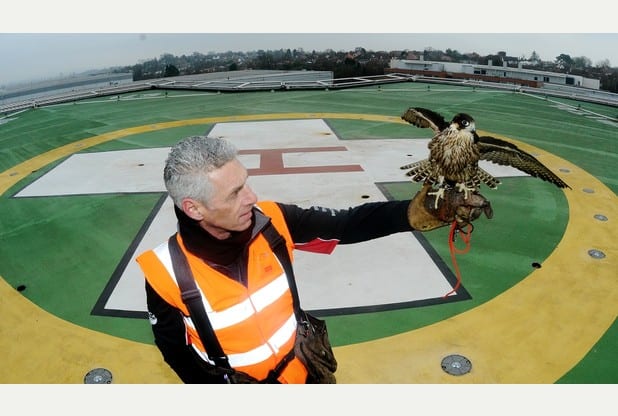
Rifle Used for Killing Pigeons
Shooting operations are normally undertaken at night with daytime shoots only being used in agricultural applications or for specialised urban applications. In urban applications, pigeons are usually shot at night and in their roosting sites because the birds are unable to fly away when the shooting starts, as they would if shoots were undertaken in daylight hours. The major problem inherent with shooting operations is the inability of the shooter to recover and dispatch injured birds. It is virtually impossible to kill a pigeon outright with an air weapon and therefore a majority of birds are simply shot and injured. Because pigeons normally roost at height and because when shot, a pigeon will be pushed backwards with the impact of the pellet entering the body, very few injured pigeons actually fall to the ground. This means that injured birds cannot be dispatched humanely, as is required by law, to prevent suffering taking place, rendering this method of lethal control inhumane. A pigeon can survive for weeks with a pellet lodged in its body and will suffer a slow and lingering death as a result. Also, in situations where a majority of the seriously injured birds cannot be humanely dispatched, the property owner upon who’s site the shooting has taken place will inevitably experience unpleasant smells and maggot infestations as birds die in their roosting places.
About Pigeon Patrol:
Pigeon Patrol Products & Services is the leading manufacturer and distributor of bird deterrent (control) products in Canada. Pigeon Patrol products have solved pest bird problems in industrial, commercial, and residential settings since 2000, by using safe and humane bird deterrents with only bird and animal friendly solutions. At Pigeon Patrol, we manufacture and offer a variety of bird deterrents, ranging from Ultra-flex Bird Spikes with UV protection, Bird Netting, 4-S Gel and the best Ultrasonic and audible sound devices on the market today.
Voted Best Canadian wholesaler for Bird Deterrent products four years in a row.
Contact Info: 1- 877– 4– NO-BIRD (www.pigeonpatrol.ca)
The information on this blog is for personal use only. Content for this blog obtained from other websites is not being used for any commercial reasons whatsoever as per the copyright statement on the Pigeon Control Resource Centre’s website. http://www.pigeoncontrolresourcecentre.org/ Special thanks for the people and companies that helped gather this information. This information is to be used for reference only.

by Pigeon Patrol | Apr 20, 2014 | Bird Deterrent Products, Pigeon Patrol's Services, Pigeons in the News, UltraSonic Bird Control
 Help is being sought from experts at Purdue University to help chase away pigeons that seem at times to be overtaking the newly renovated LaPorte City Hall.
Help is being sought from experts at Purdue University to help chase away pigeons that seem at times to be overtaking the newly renovated LaPorte City Hall.
Their numbers are so high that some people coming in and out of the building are relieved not to be hit by droppings.
“Don’t walk out there without your hat on,” said LaPorte City Councilman Ron McAtee.
It’s a problem a busy Mayor Blair Milo would rather not have to tackle, but her office is persevering, contacting Purdue University and other cities that have had success in combating pigeons for possible solutions.
“We are still working on that,” said Milo.
The $1 million renovation of the historic 1913 structure was virtually completed in February at the time complaints started being voiced about large numbers of pigeons roosting close to the edge of the roof and on the ornamental metal trim.
Spikes were put on the ledges near the roof but that didn’t drive them away.
Instead, the pigeons found room behind the spikes to nest or moved to window sills and other ledges to perch lower on the building.
“We’ve got a little more work to do on that,” said McAtee.
Not only is there a risk of being pelted with droppings, but the waste littering the concrete steps leading up to the front entrance and other spots on the ground has to be cleaned.
Jason Flores, an employee of Larson Danielson Construction, said his crew has had to wipe the mess off the limestone ledges at times during the renovation and has seen nests in the soffit close to the roof’s edge whenever he goes up on a lift to perform restoration work.
After the winter, there were droppings caked on parts of the exterior.
“See how it’s starting to build back up again,” said Flores, 39, of LaPorte.
Milo said trapping the birds is among the ideas also being explored but that would mean an organization having to come in regularly to release the pigeons.
“We want to do it in the most humane way possible,” said Milo.
Gene Matzat, an educator with the Purdue extension office in LaPorte, said besides tarnishing a building, pigeons also carry disease that could spread to humans.
Matzat said possible solutions include running a thin porcupine wire with sharp metal prongs along roosting places on the building to inflict pain so the pigeons fly elsewhere.
Attaching sheet metal or wood on the stone ledges at an angle so pigeons won’t feel comfortable roosting is among the other options.
Depending on what the city decides to try, there likely will be some expense.
“The results may justify the cost,” said Matzat, who added farmers sometimes turn to pesticides absorbed by the feet on pigeons to kill the birds roosting inside barns and pole type structures.
In extreme cases, he said some communities have brought in birds that prey upon pigeons to reduce their numbers.
Once they’re gone, though, Matzat said there is a chance the same or some other flock of pigeons will wind up back there.
“They’re adaptable. They’ll look for the best place for their area that they would enjoy roosting on and they’ll probably find it,” said Matzat.
Seems that these people should be investing in a TubeSonic!!
About Pigeon Patrol:
Pigeon Patrol Products & Services is the leading manufacturer and distributor of bird deterrent (control) products in Canada. Pigeon Patrol products have solved pest bird problems in industrial, commercial, and residential settings since 2000, by using safe and humane bird deterrents with only bird and animal friendly solutions. At Pigeon Patrol, we manufacture and offer a variety of bird deterrents, ranging from Ultra-flex Bird Spikes with UV protection, Bird Netting, 4-S Gel and the best Ultrasonic and audible sound devices on the market today.
Voted Best Canadian wholesaler for Bird Deterrent products four years in a row.
Contact Info: 1- 877– 4– NO-BIRD (www.pigeonpatrol.ca)
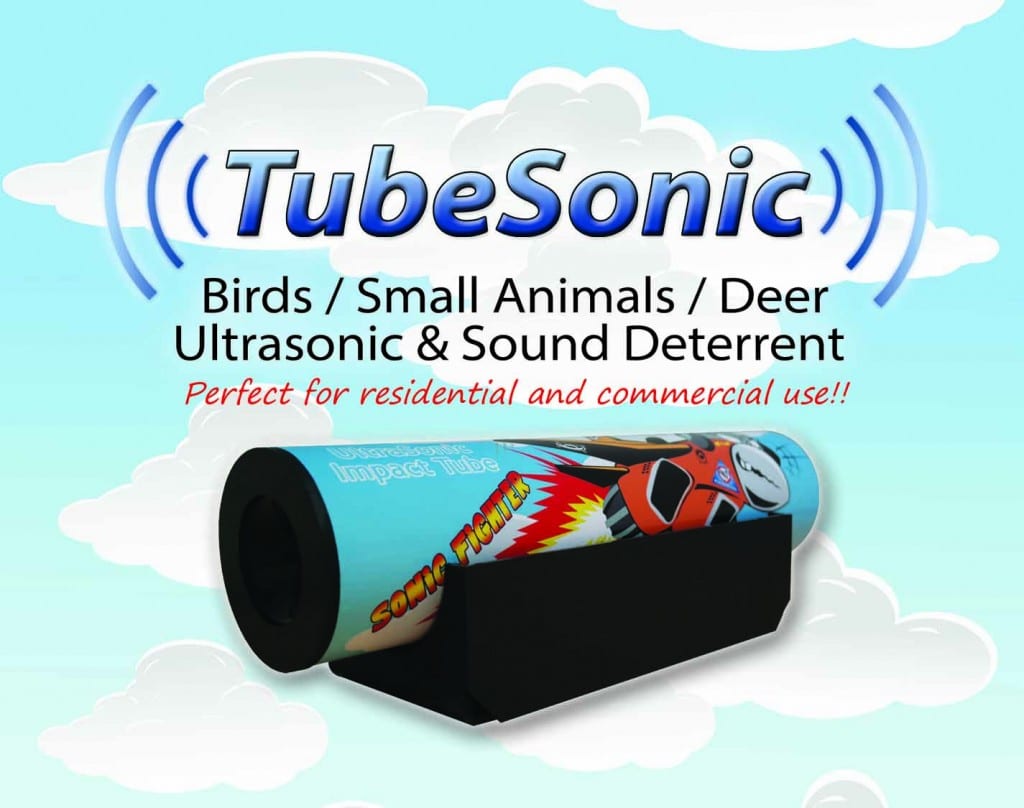

 ALBUQUERQUE, N.M. —People living in a northwest Albuquerque apartment complex said they’re tired of being forced to live in filth and their pleas for help have gone unanswered.
ALBUQUERQUE, N.M. —People living in a northwest Albuquerque apartment complex said they’re tired of being forced to live in filth and their pleas for help have gone unanswered.










